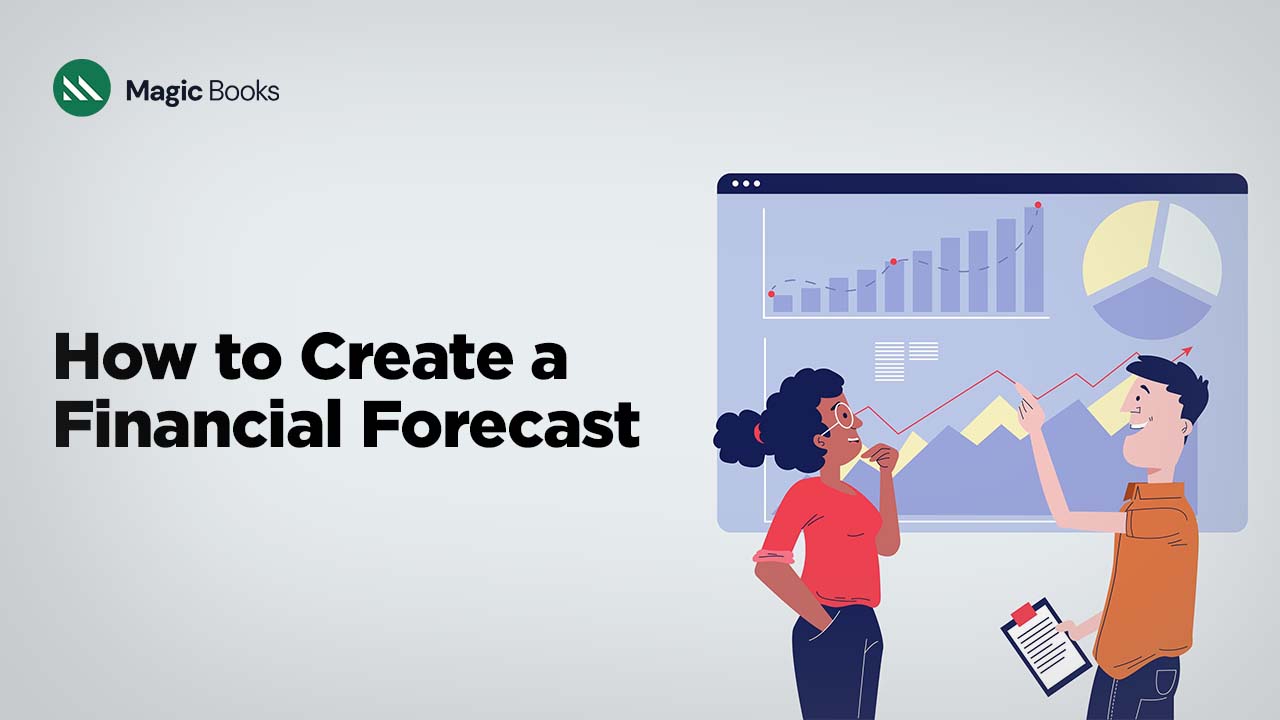Financial reporting starts by examining how well a company did in the past. People who invest in and follow companies rely on financial results to measure their success. Business planning holds equal weight under today’s system. To earn support from investors a firm needs to prove success from past performance plus show investors they will be successful going forward. Financial forecasting is necessary for this. Using historical financial information about revenues sales and costs companies can forecast their future performance. Our predicted results need to rely on estimates because specific business events might arise to alter actual performance figures. Financial forecasts let companies decide how to hire employees and manage their money with precise revenue expectations to build effective strategic plans. It also helps you keep an eye on the future. When planning finances you pick targeted or smaller accounts based on your personal spending estimates. When you build general planning tools you should base results primarily on large-scale estimates instead of specific predictions. To predict future company events you need to supply exact information about all details.
Financial forecasts use past firm data and planning assumptions to predict future income and expenses, unlike financial predictions. It is significant for a number of reasons, including:
- Invite investors to invest funds now by showing proof of future income growth.
- Setting financial plans while managing available funds toward the next period.
- You seek funding from financial institutions by showing them how you expect future cash flows.
- You will use this information to disclose upcoming company directions and potential market trends.
- Financial forecasting stands apart from other financial planning practices including budgeting and modeling.
- Your company budget shows how you plan expenses against income but differs from financial forecasting
Financial forecasting vs. budgeting
Your business budget matches your revenue against your spending needs to pay for predicted expenses. Unlike projected financial data your budget functions independently alongside the results shown in financial forecasts. Budgeting means using your financial strategy while forecasting predicts future financial results. Through financial modeling, you can predict business results by combining actual data with external market conditions. Your spending plan identifies future financial changes by showing how much money you need for them.
Financial forecasting vs. financial modeling
The world of finance distinguishes financial modeling from financial forecasting through financial performance estimation. The act of building a mathematical representation represents financial modeling. Most businesses use financial forecasting programs or Excel spreadsheets to develop their models. Through financial modeling, companies reveal more about their performance results and present multiple predictions including best case base case and worst-case scenarios.
FINANCIAL FORECASTING METHODS
There are two primary categories of forecasting: quantitative and qualitative.
Quantitative Methods
Business leaders mainly use historical data to make accurate predictions about future performance.
1. Percent of Sales
Businesses predict potential profits using sales percentage-based methods. This technique estimates financial outcomes by examining sales interactions. Our estimate of sales revenue directly matches product pricing increases when business orders grow.
Use sales revenue history from past years to predict what portion of future sales these customers will deliver. Break account spending into routine operating costs and projected sales revenues while keeping market conditions steady. Our analysis of past sales and cost of goods sold data helps us set a consistent 30 percent ratio for future sales projections.
2. Straight Line
A company using this method believes its sales increase pattern from past periods will persist in future periods. Analysts create earnings forecasts by multiplying current annual sales with growth rates from last year. Using line-by-line forecasting a company would maintain its 12% growth pattern year after year.
The basic sales trend method works well for debut businesses yet neglects vital key parts of business operations.
3. Moving Average
A study of how values across past periods split reveals upcoming activity direction. Evaluating market trends lets us estimate business growth in the near future. To estimate sales numbers for the next month you need to sum all sales data points from the previous three months.
Through our moving average forecasting technique, we generate multiple sales projections simultaneously. Businesses use standard tools like moving averages to predict stock market trends and product demand outcomes.
To calculate a moving average, use the following formula:
A1 + A2 + A3 … / N
Formula breakdown:
A = Average for a period
N = Total number of periods
When you credit recent trends more value, a moving average forecast provides better answers to predict future outcomes.
4. Simple Linear Regression
Simple linear regression uses linked variables to predict future figures. Our forecast outcome needs the independent variable to remain at its past status.
The equation for simple linear regression is:
Y = BX + A
Formula breakdown:
Our study seeks to forecast the main output variable known as Y.
B = Regression line’s slope
X = Independent variable
A = Y-intercept
5. Multiple Linear Regression
When a company’s results depend on multiple separate influences, leaders often prefer to use multiple linear regression analysis. The forecasting results become more precise because they take into account various aspects that affect performance measurement.
Our prediction method requires the dependent and independent factors to show a direct straight-line pattern in their connection. Multiple independent variables need weak correlations to ensure we can identify their effect on the dependent variable.
Qualitative Methods
Numbers alone fail to explain all aspects of future performance. The way performance is carried out relies on elements that cannot be properly measured. When using qualitative forecasting methods professionals study performance patterns based on their own expertise rather than past statistics.
Many experts doubt forecasting methods based on personal experience because they depend more on individual judgment than numerical analysis. Unfortunately, these methods offer insights beyond what quantitative analysis reveals while handling forecasts for data that cannot be measured over time.
6. Delphi Method
When experts from market backgrounds use the Delphi method they study current business conditions to determine an organization’s future success.
The facilitator connects with expert individuals in the organization who answer surveys about their views on future business results. The facilitator combines all experts’ research findings into a package sent for expert review. Our primary objective is to keep reviewing the forecasts until we find a unanimous agreement.
7. Market Research
Organizations need market research as their key strategic tool. Business leaders can see every aspect of their market environment by studying competition dynamics and consumer buying habits while accounting for market changes. Companies launching new ventures depend on market research because they need basic data to begin. A company’s financial projections help both investment and startup planning during its early operational period.
To start market research you must first define your research question as a hypothesis and select suitable procedures. Using consumer surveys effectively shows you what customers do regardless of available statistics.
How to do financial forecasting in 7 steps
Your planned operations heavily depend on financial forecast findings to function effectively today and into the future. Your results forecast drives investor decisions about your company through financial credit levels.
Accurate forecasting requires our highest attention because it influences every aspect of our business operations. Here is a step-by-step guide to ensure that you do it right:
1. Tell us what financial forecasts your business needs.
Why are you wanting to make financial predictions? How many sales units do you think your company will sell? Do you want to learn how your company’s current financial data will shape its future path? The reason you need financial forecasts determines which numbers and metrics you will measure in your planning.
2. Study previous company reports and take operating numbers from past periods.
The success of financial forecasting depends on having complete historical financial data. As such, it is important to gather all relevant historical data and records, including:
- Revenue
- Losses
- Liabilities
- Investments
- Equity
- Expenditures
- Comprehensive income
- Earnings per share
- Fixed costs
No proper accounting results will come from your system without the whole business data.
3. Determine the number of years you want to use for your financial planning
Business leaders depend primarily on planned financial reports to outline their company’s future direction. Users can select either short-term estimates or extend these plans over several years. Organizations generally set up their financial planning for one specific year.
Changing market circumstances force us to update our prediction data. Our available data correctly forecasts financial results over short-term periods.
4. Choose one method to estimate your business’s future financial performance
There are two financial forecasting methods:
When market planning experts study company records they build reliable forecasts by joining sales opinions with customer feedback through mathematical models.
The systems divide work areas and set rules while showing you measurement results. With scarce startup data about past performance, business analysts need to translate market insights into their financial planning system.
5. Document and monitor results.
When the trading environment shifts dramatically, your financial assessments will keep getting worse. Monitor how the market reacts to company changes by regularly checking the actual performance results. With the latest data available on the business, your predictions are updated. Our forecasting system takes away manual work during the forecasting activities.
6. Analyze financial data.
The company data you are using will back this agreed financial performance at the future running time. The business financial tools will show you the whole information necessary to draw effective plans for future success.
7. Use the time period plan from your earlier design.
Financial performance should be measured by a great company by regular review of forecast vid numbers. This shall be done by the financial performance of the company at the closing interval approved by the forecast. Regular financial monitoring allows your team to make more precise resource forecasts.
Accurate financial forecasting offers many benefits to small businesses, including:
New Source of Capital: Investors and lenders depend on financial projections to evaluate a business opportunity based on the risk it has because it gives specific reasons for their affirmative or negative decision. A good financial forecast raises your chances of getting funding because that is precisely what they search for: smart businesses for investment and risk management.
Better Budgeting: By tying such forecasting to concrete numbers, it gives more insight to the budget-making process and effective spending. Thus, with clarity and better monitoring of expense priorities, financial control improves.
Improved Decision-Making: Projections indicate how business and financial conditions will behave in the future for better decision-making. Because of the foresight into the choices lying ahead, your determination about investment and changes in business will be well-informed.
Better Strategy Planning: The combination of marketing forecasts with financial ones will help develop business strategies. Starting with forecasts will allow you to do some growth planning while avoiding risk and striving toward your destination.
Forecasts enhance the trust of all stakeholders in the business- employees, private equity businesses, and investors. Profits show that your organization is well-organized and capable of dealing with possible challenges. Financial forecasting shows how you could approach doing things better and more economically through process optimization. Keeping updated with forecasts helps prepare for market transformations and market changes.



